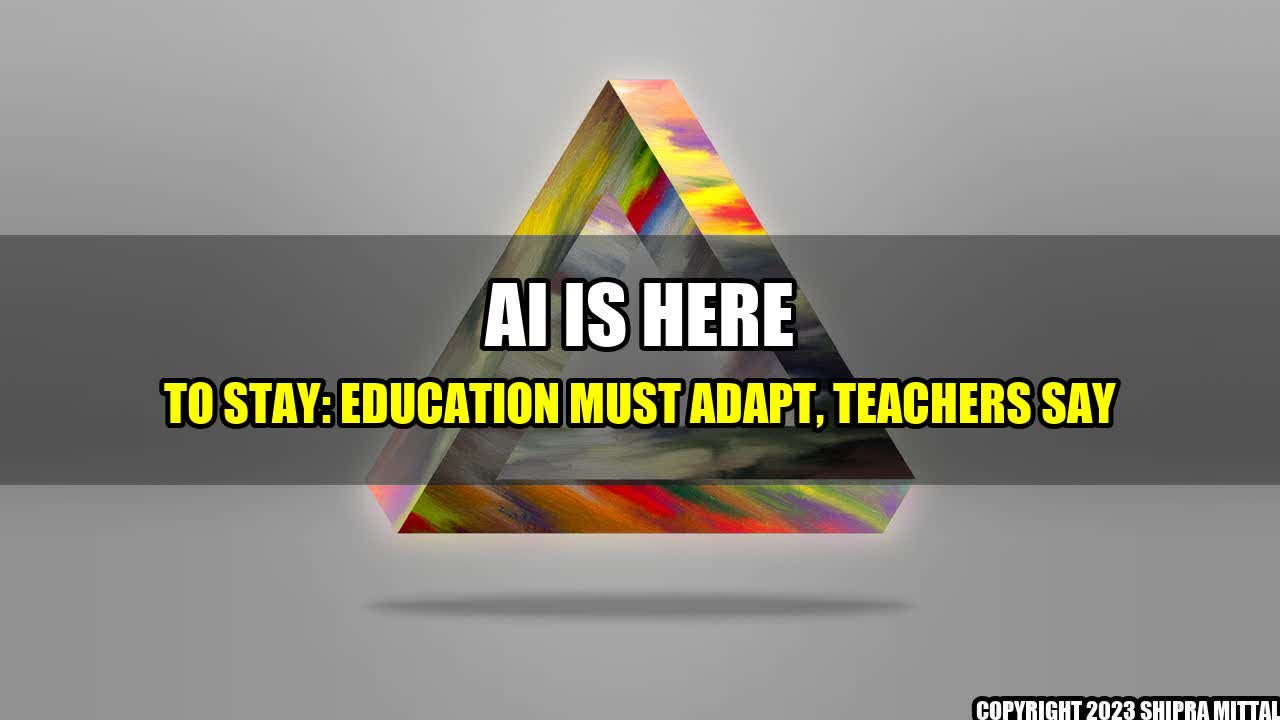The Robot Teacher
It was an ordinary school day in Ms. Johnson's fifth-grade classroom. The students were engrossed in a science lesson when the door opened and in walked a strange figure. It was a robot with a head that resembled a TV screen and arms that were shaped like tentacles. The students stared in amazement as the robot introduced itself as their substitute teacher. Ms. Johnson had to take a day off, and the school had brought in the latest technology to fill in for her. The robot proceeded to teach the lesson with efficiency and accuracy, using its artificial intelligence to answer every question the students had. It was clear that the robot had a wealth of knowledge and could be a valuable asset to the classroom.
The Rise of AI in Education
The scenario described above may seem like science fiction, but in reality, artificial intelligence (AI) is making its way into the K-12 classroom. According to a report by AI in Education, the use of AI in schools is expected to grow by 47.5% between 2017 and 2021. This growth is due in part to the numerous benefits that AI can provide to the educational environment.
For one, AI can personalize learning for individual students. With the use of algorithms, AI systems can analyze a student's learning style, strengths, and weaknesses, and then tailor instruction to meet their specific needs. This not only improves student engagement and outcomes but also frees up teachers to focus on other aspects of instruction.
Additionally, AI can assist with administrative tasks, such as grading papers and tracking attendance. This can save teachers time and energy, which can then be redirected towards more meaningful interactions with students.
However, the integration of AI in education is not without its challenges. One concern is that AI can amplify existing bias and inequalities within the educational system. For example, if an AI system is designed with biases towards certain demographics, it could perpetuate the marginalization of certain groups of students.
Teachers as Guides
Despite the potential benefits and challenges associated with AI, the bottom line is that AI is here to stay. Teachers must adapt in order to guide the next generation's learning. Here are three ways in which teachers can embrace AI in the classroom:
- Learn to Use AI Tools: Teachers should take the time to learn how to use AI tools and technologies that are available to them. This will help them to better understand AI's capabilities and limitations, and how to incorporate them into their teaching practice.
- Collaborate with AI Systems: Teachers should view AI as a collaborator rather than a replacement. By working together with AI, teachers can create a more personalized learning experience for their students and save time on administrative tasks.
- Prioritize Human Interaction: While AI can be a valuable tool, it's important to remember that the most important aspect of education is the human connection between teacher and student. Teachers should prioritize creating meaningful relationships with their students and providing guidance and support throughout their learning journey.
The Future of AI in Education
As AI continues to evolve and become more integrated into the classroom, it's important for teachers and administrators to stay up-to-date on the latest trends and developments. By doing so, they can ensure that their students are prepared for the future that awaits them.
Ultimately, the goal of AI in education should be to enhance the learning experience for students and empower teachers to be more effective in their roles. By embracing AI and adapting to its use, teachers can create a more dynamic and engaging educational environment that meets the needs of all students.

Akash Mittal Tech Article
Share on Twitter Share on LinkedIn